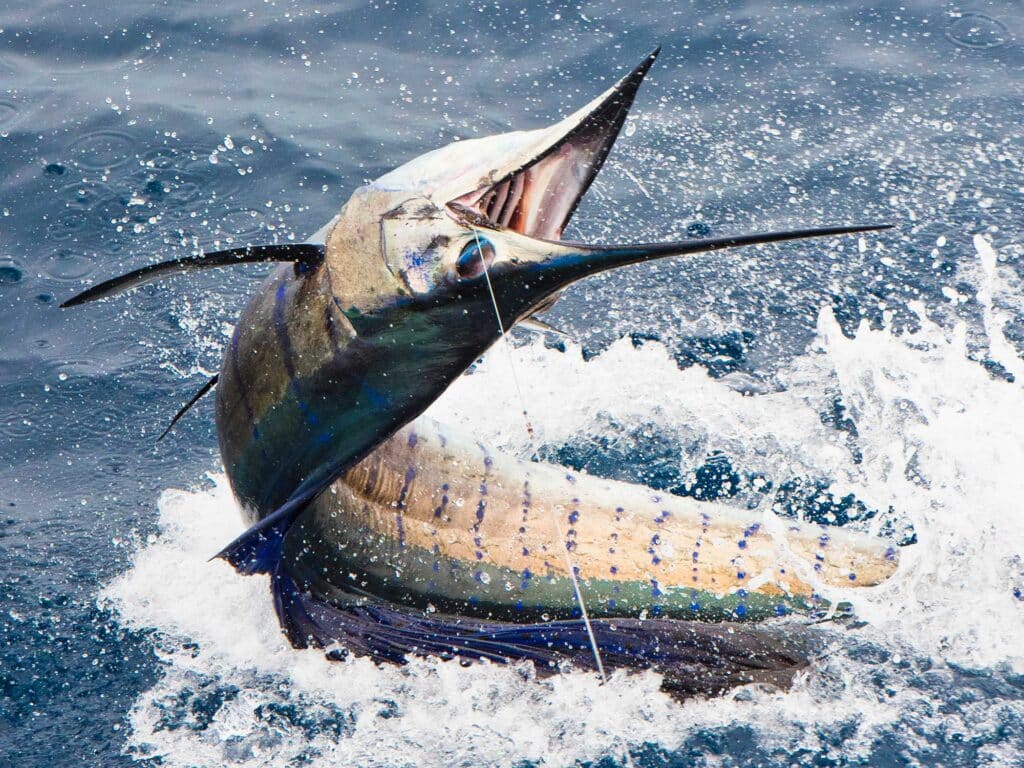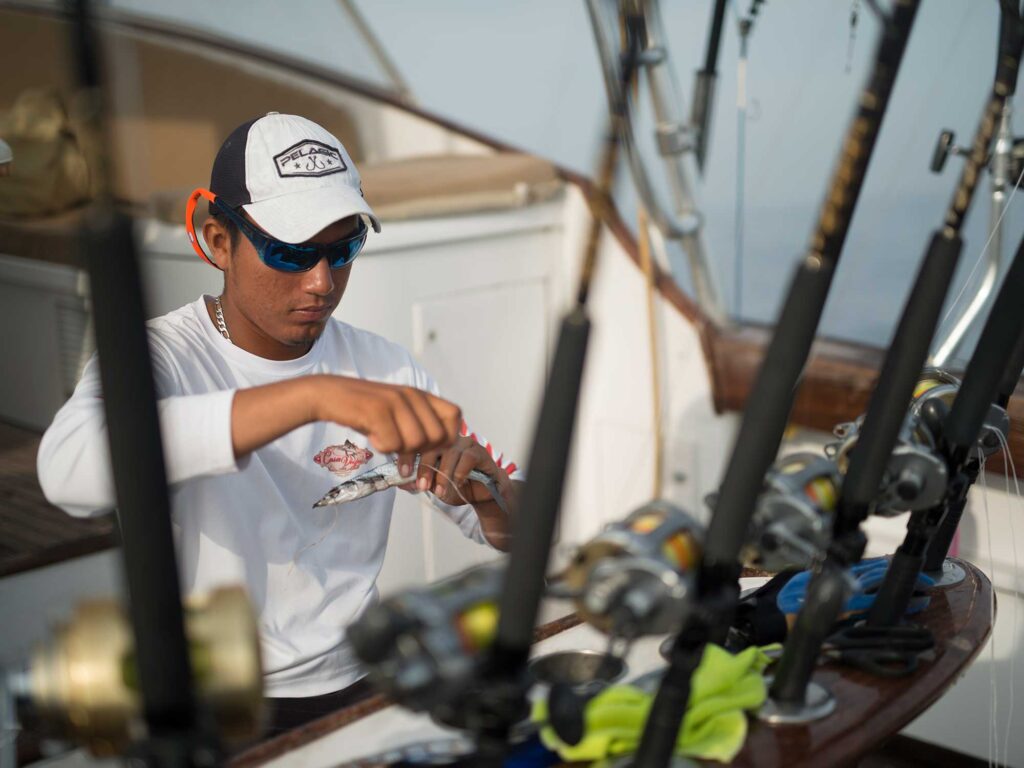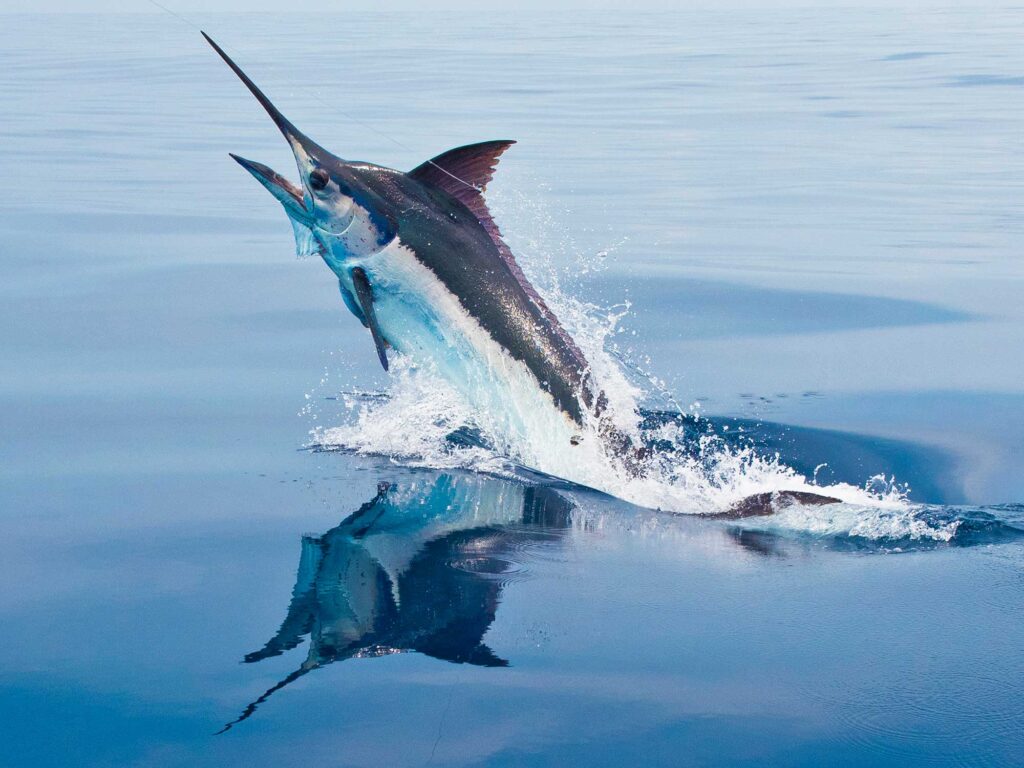
Pick a popular game fish and you’ll find multiple places designating themselves as “capital of the world” for that species. But it’s hard to imagine any spot on the globe more justified in claiming the title of “sailfish capital of the world” than the Pacific coast of Guatemala, south of Guatemala City. The stats don’t lie. Guatemala is among few places that boast good sailfishing year-round, with an annual release average of 12 sails a day per boat, and 20 to 40 shots per day not unusual.
Or how about 124 sailfish released by a single boat in a day? That’s the highest one-boat total — so far — claimed at Casa Vieja (casaviejalodge.com), the largest sailfish lodge on this coast. Other landmarks for the lodge’s fleet include 300 billfish (sails and marlin) released by one boat over three days, and 57 sails released on fly-fishing gear in a day.
Anglers who visit here regularly have their favorite months or seasons, says David Salazar at Casa Vieja. “But they’re always out there, all year. And it seems like in every month of every year, we’ll usually have at least one exceptional week.”

Casa Vieja boats are pretty single-minded in their approach to finding sails, which they do by trolling ballyhoo (on circle hooks). If sails are around, they seldom resist. But with so many sailfish, fly-casting to them has become a prime sport for many of the lodge regulars.
Most anglers find the resort’s standard Alutecnos reels filled with 30-pound line to be ideal for Pacific sails. Compared to Atlantic sailfish, Pacific sails run on the large side, with 60- to 80-pounders very common, and some growing considerably larger.
While sails dominate the fishery, they’re not alone, often accompanied by the man in the blue suit, as anglers often label blue marlin. Typically, at least one blue will be hooked every few days, on average. Like sails, they’re around all year, though Salazar says the April through August period offers higher chances. Black marlin also figure in the mix, but considerably less often than their blue cousins. Casa Vieja boats keep a 50-pound outfit rigged for a pitch bait to put out when a marlin is spotted.

Like sails, yellowfin tuna and mahi are caught throughout the year, but April to August is prime time to encounter large schools of these tasty game fish. Nonstop action for 40- to 80-pound tuna can test an angler’s arms.
Fishing along the shore offers action of a different sort, and it’s not unusual for anglers on the water for several days to spend one day fishing for roosterfish, as well as skipjack, Sierra mackerel, rainbow runner, and crevalle and horse-eye jacks. So far, slow-pitch and speed jigging hasn’t taken off here, but Salazar mentions that one of the resort’s skippers enjoys doing this on his own time with great success.
Planning a Trip

When to Go: The billfish grounds are a trek offshore, with an average run from the lodge of 25 miles. But again, Salazar points to the variability: “Some days it may be a five-mile run, and others 50 miles.” Fortunately, the seas here are known to be tranquilo mostly, only occasionally becoming uncomfortably choppy. Salazar acknowledges that the area gets more rain from about mid-June through mid-October, but unlike many Central American regions on the Pacific, heavy, monsoon-type rainfall is rare.
Where to Go and How to Get There: Getting to Casa Vieja means flying into Guatemala City. A flight is two hours in the air from Miami and 3 ½ hours from either Dallas or Atlanta. From there, a Casa Vieja Lodge van takes anglers the two hours south to the coast, Puerto San Jose and the lodge.

What to Expect: There is more to see and do here in addition to the fishing. Salazar notes increasing numbers of families in recent years. Guatemala City offers a variety of art galleries and museums, including collections of pre-Columbian art.
Also in the area: Lake Atitlan, one of the most beautiful lakes in the world; the Pacaya Volcano (try a guided hike or trail ride); and Tikal National Park, in the northern Guatemala rainforest.









